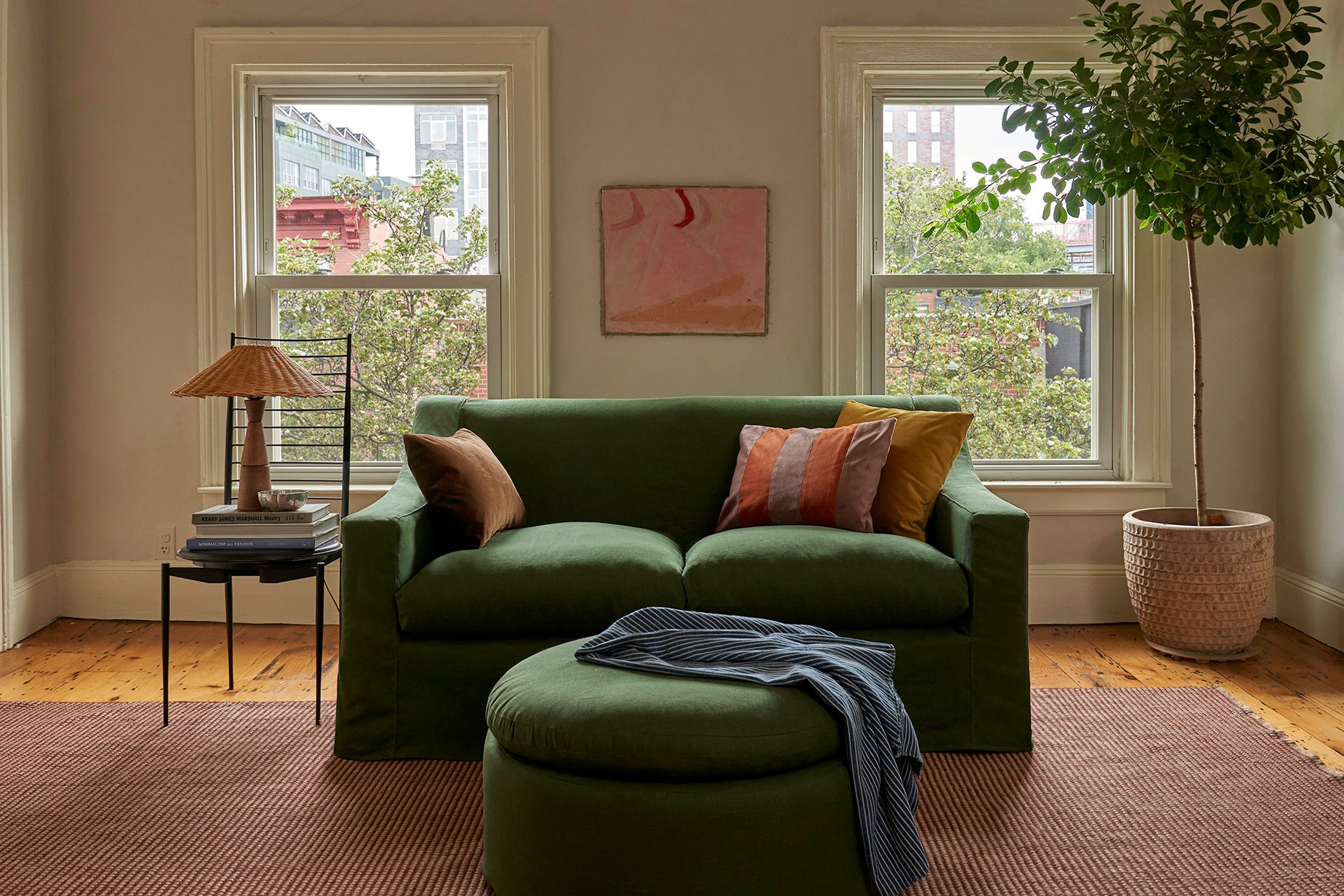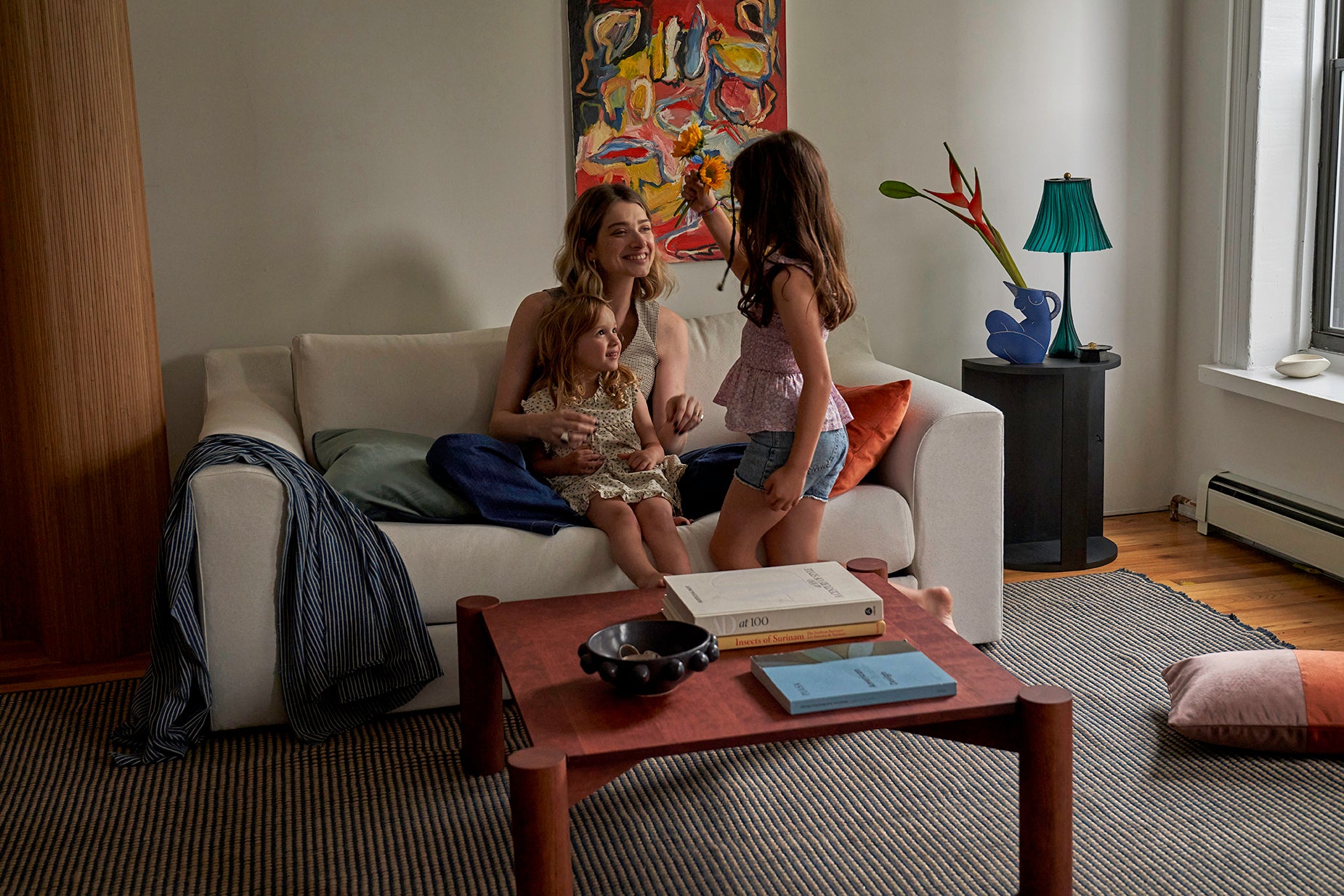Using customer research, Phantila says it wasn’t hard to find people that felt the same way about looking for a more sustainable solution to “fast furniture.” She and her team conducted interviews to understand purchasing behavior and ran fake ads to see whether sustainability messaging resonated with people. “We wanted to create a solution that spoke to those values, but then also took into account accessibility and budget as well,” Phantila says.
Ahead, Phantila shares how Sabai Designs built its brand around sustainability from the beginning.
5 ways Sabai Design built a sustainable brand

Phantila says the key to Sabai Design’s direct-to-consumer success was designing the entire business model to be more thoughtful about the environmental impact. “If you aren’t thinking about that in the beginning, it’s really hard to address problems retroactively,” Phantila says.
Here are some tips for building your own sustainable brand with lessons learned from Sabai Design’s successful launch.
1. Creating a domestic supply chain
In the early stages of launching Sabai Design, Phantila and her team focused on creating a domestic supply chain, because it would cut down on the environmental impact of shipping across long distances. She also wanted the manufacturer to work on a made-to-order model, so that the company wouldn’t be creating unnecessary waste.
After a lot of cold outreach and recommendations from other manufacturers, Sabai Designs finally found their perfect manufacturing partner — a small minority-owned factory in North Carolina that could ship products directly to customers.
It was fortunate timing. Sabai Design launched in July 2019, so Phantila says the company was insulated from the larger global supply chain disruptions that took place during the COVID-19 pandemic. “Because our supply chain was so localized, we weren’t experiencing those massive delays,” Phantila says.
2. Designing components that are replaceable
Finding a manufacturer that could work with a made-to-order model was also important because Phantila already had plans to launch a “Repair, Don’t Replace” initiative to help extend the life of the furniture. The products were designed in components from the beginning, so that individual pieces could be replaced if a customer breaks a leg of a sofa or a dog rips up the arm. The manufacturer could then produce whatever component is needed.
Sabai Design also started selling products to change the look of their pieces in case people want to keep the furniture, but change the style. The company’s line of slipcovers, for example, is another way customers can extend the longevity of their purchases. “It’s more economical for the customer, it’s producing less waste, and it’s another revenue driver for us as well,” Phantila says.
3. Facilitating resales
If customers do want to return a sofa or sell it when they move, Sabai Design also offers a secondhand marketplace run by a third-party provider. Customers can sell their used furniture to other interested buyers, rather than adding it to landfill.
The company is also testing an in-house customer-to-customer resale option. Sabai will facilitate the transaction by marketing used products to its email list, and providing shipping materials to sellers.“We’re really minimizing the amount of transportation that’s going on with these return or resale products,” Phantila says.
4. Expanding impact with new product lines
“We recognize that there are a lot of different types of people who care about their impact who have different aesthetics,” Phantila says. So this past year, Sabia Design introduced two new product lines to appeal to a new segment of customers with a different style.

Less than a year after their launch, these two new collections are already a hit. New influencers and content creators have started collaborating with the brand, and the company’s average order value has grown by $200.
5. Getting customers involved
Phantila says the biggest challenge for Sabai Design is communicating the company’s impact with customers. She says it requires transparency so that people feel they’re part of the decision-making when it comes to pricing increases or pursuing new initiatives. “If you’re communicating that to your customers, you’re all kind of on the same side,’” Phantila says.
To learn more about how Sabai Design incorporates sustainability into different aspects of its business, listen to Phantila’s full interview on Shopify Masters.




